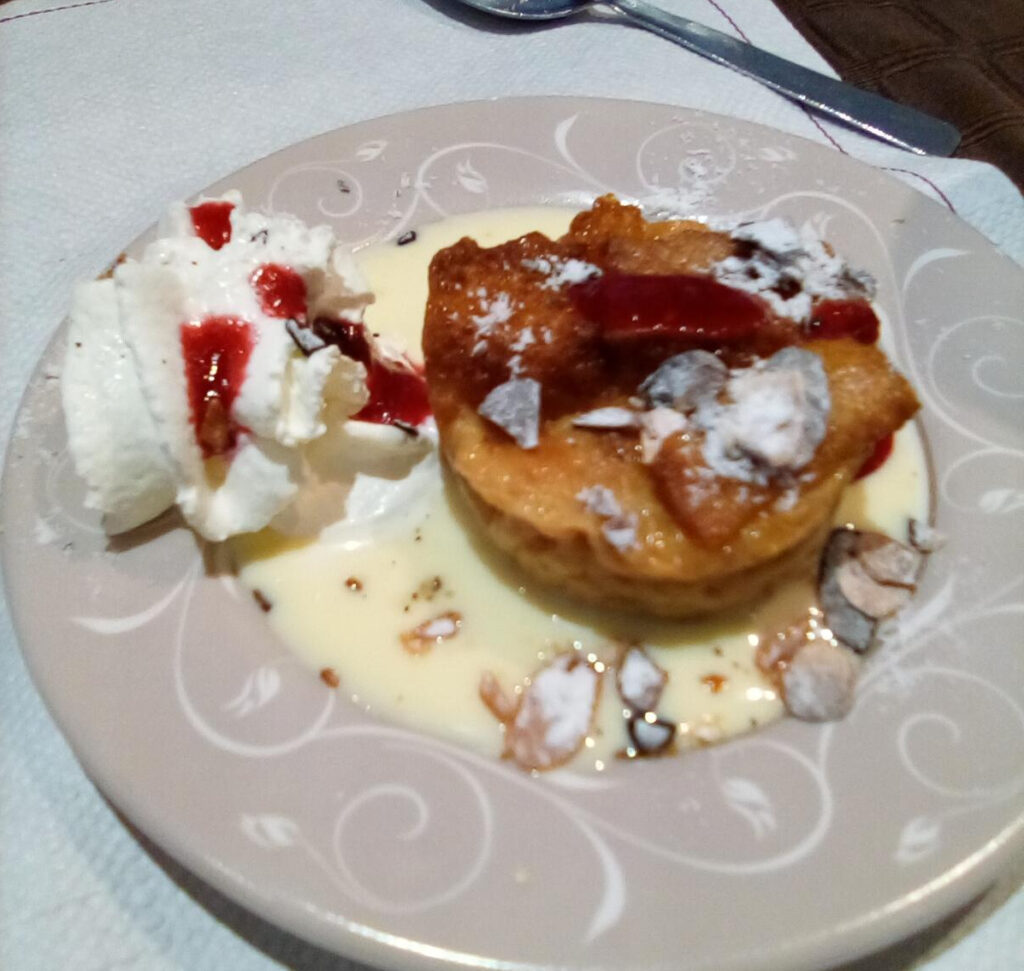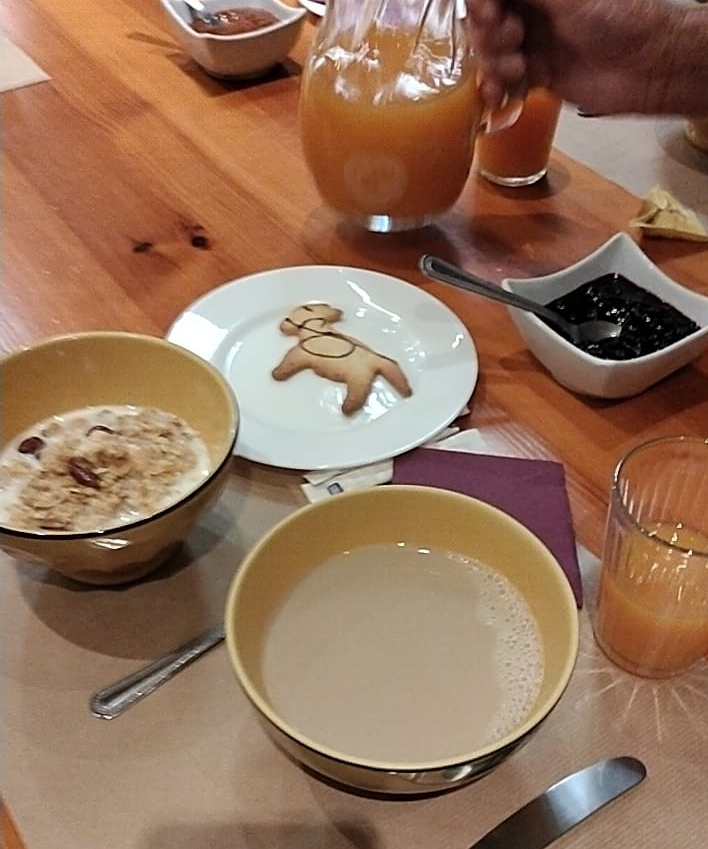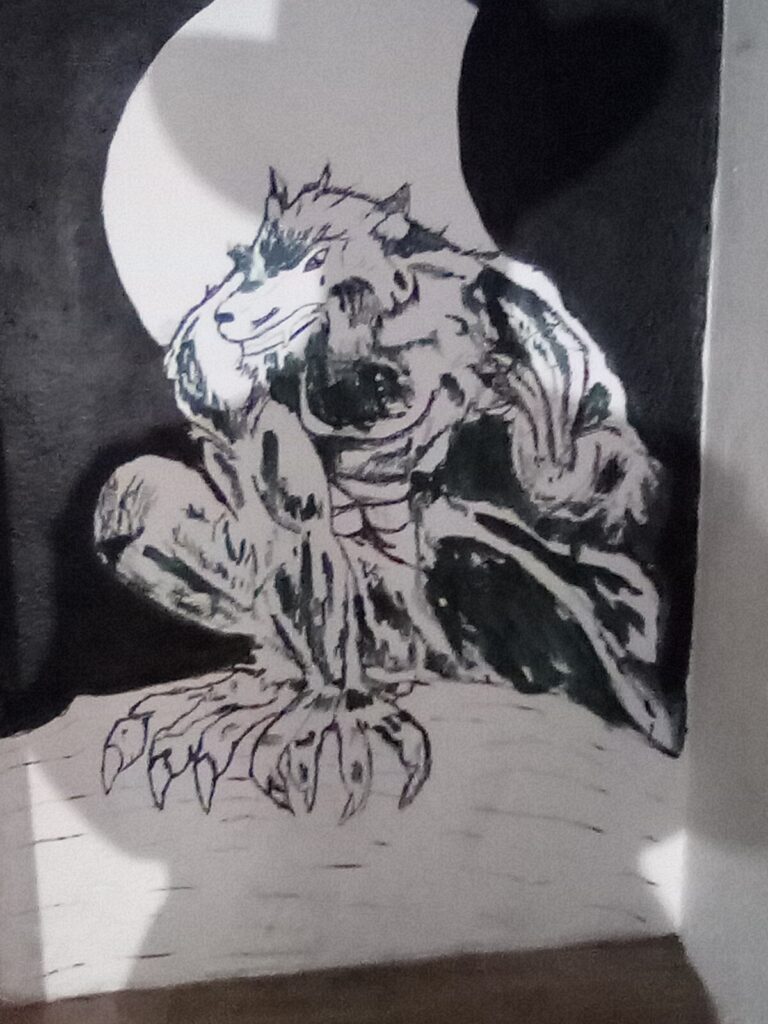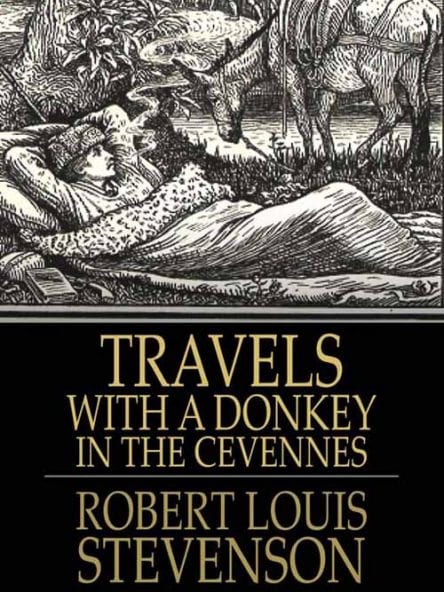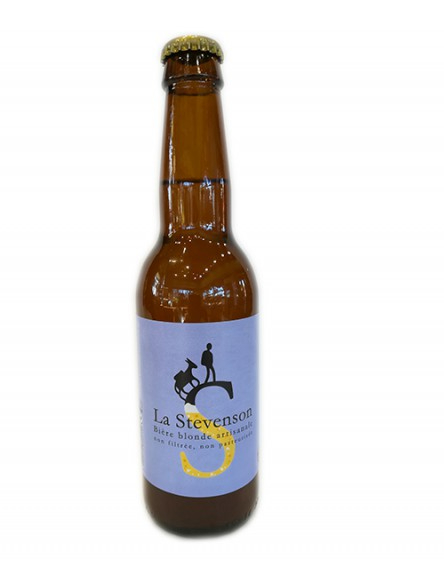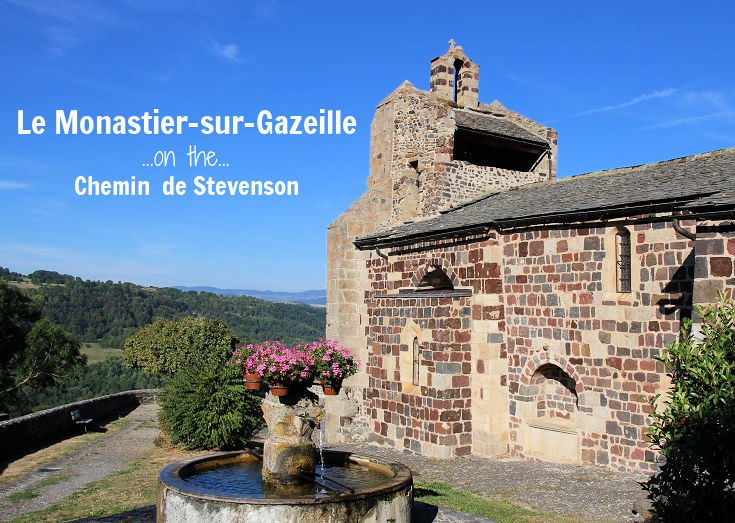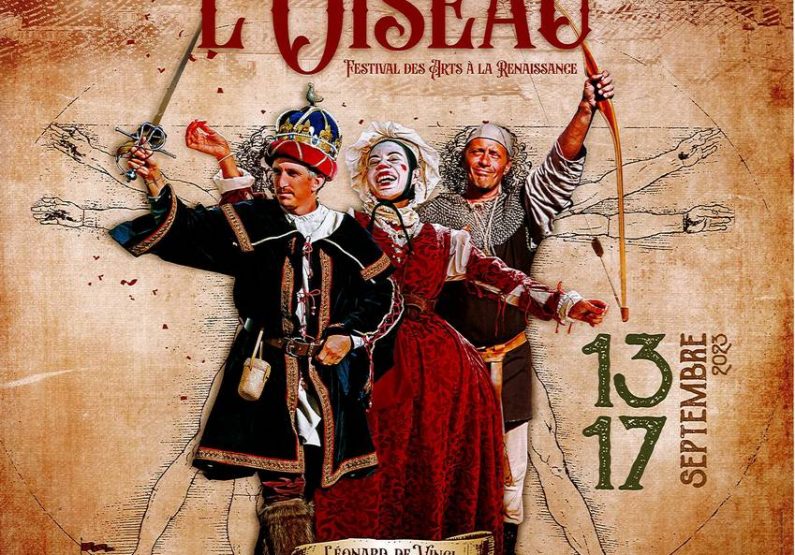* * * *
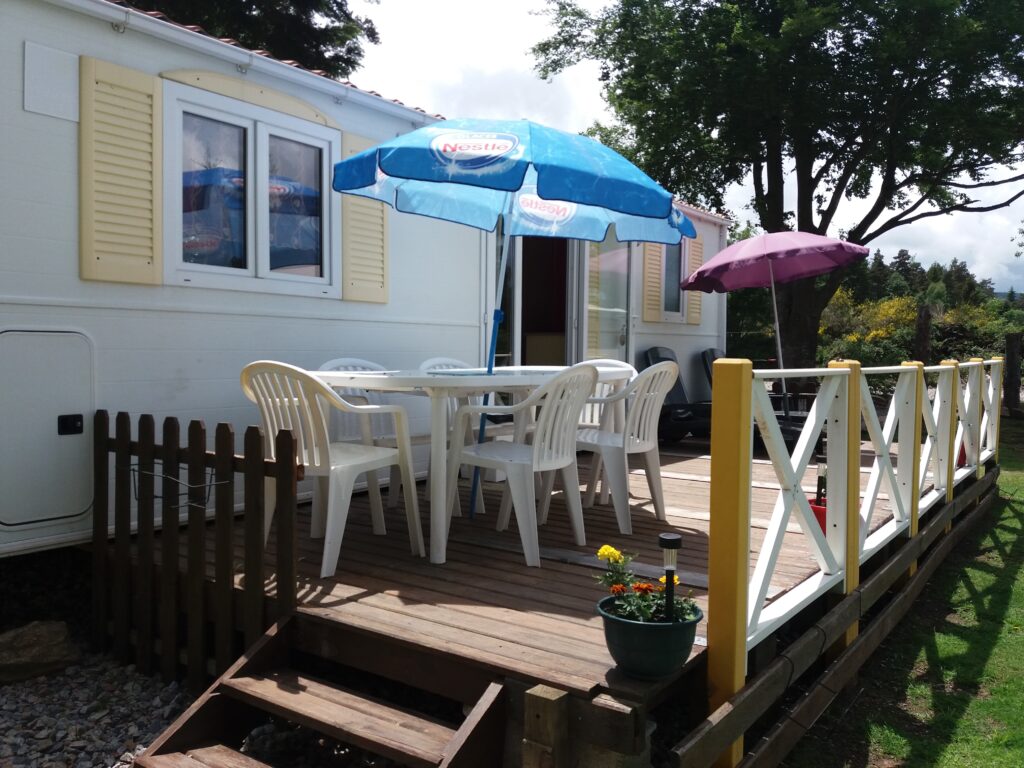
* * * *
A reminder: I’ve been doing a series of posts on my 15-day, 150-mile hike on the Robert Louis Stevenson Trail, last September 2023. (In south-central France, described in Stevenson’s 1879 book, Travels with a Donkey in the Cévennes.) The series began with “The last time I saw Paris?” – Just this past September. Then and since I’ve written about flying into Paris, then taking trains down to Lyon and Le Puy en Velay, and from there starting the hike with my brother and his wife, hiking companions. So far I’ve covered seven hiking days and one wonderful day off.
The last post talked about a short hike – for two of us anyway – from Saint-Étienne-de-Lugdarès down to La Bastide-Puylaurent. A short and pleasant hike, four and a half miles, mostly along paved highway. But more than that it marked our passing the half-way point of six straight days hiking. (“Only three more to go.”) That was on Sunday, September 24, 2023. The next day, Monday the 25th, our goal was another camp-in-cabin place, in Chasseradès.
The hike down from Bastide was pleasant enough. A shady country bypath, gravel-topped, for cars a narrow one-lane, but for hikers, perfect, lined by tallish trees throwing deep shadows. Then the lane turns to sun-drenched, trees on each side but not as tall, more like bushes, lots of deep-blue sky and a row of those big whooshing wind turbines we pass under. Then the lane turns back into the shade, with a reflecting puddle from some recent rain. Out onto heavier gravel, open, lined on the right by posts holding barbed wire, a pasture sloping down, then up off in the distance toward those mountains in the distance that we’ll climb in a few days…
But enough of poetics. Finding the place we would stay that night took some effort, first of all because it was so tough to learn the actual name. I only found out later – once I got back home – that it’s called Le Sous Bois De Jade, Chasseradès. But in real time, there in France, hiking the GR-70 down to Chasserades, finding that place marked a hale and hearty “Welcome to the Land of Confusion!” (Referring to the 1986 song by Genesis featuring an “anxious beat” and a “tentatively hopeful lyric.” And that’s not to mention how many miles it would take to get there.)
Our spreadsheet had it as “ABB Bungalow,” or the alternative “Night in the Woods.” Yet another preparation paper said “Une Nuit au Coeur Du Bois.” Which was fairly close, but not close enough. To confuse things further there was another camp-in-cabins place in town, Camping municipal Chasseradès. But it wasn’t just us “furriners.” Many of the local townfolk we asked had no idea either. Then there was the confusion about how many miles it would take to get there. According to Google Maps it’s a mere 5.1 mile hike from our lodging in Bastide. But that guidebook I got in Le Puy said it was 12.3 kilometers, or 7.64 miles from Bastide to Chasserades. Then there’s the site, Stevenson Trail GR-70: Bastide-Chasserades (AllTrails) which said this:
Head out on this 6.9-mile point-to-point trail near La Bastide-Puylaurent, Lozère. Generally considered a moderately challenging route, it takes an average of 3 h 0 min to complete. This is a very popular area for hiking, so you’ll likely encounter other people while exploring.
We ended up clocking in at 8.2 miles, but that was mostly because we wandered around town a bit, asking for directions. As I wrote later, “Much confusion in town.” But as I also added later, “Finally a French couple helped out. Husband drove us back past to where we should have turned.” What I remember is we three hikers somehow getting into a conversation with this “young” French couple. (About our age, 72 to 78.) They took an interest in our hiking the GR-70, and we were all set to hike back to where we should have turned, and beyond.
That’s when the husband volunteered – on his own – to drive us back a ways.
To backtrack a bit: There’s not much to see in Chasserades, as we came in on the D6 highway. We’d hiked as far as the “onliest place in town,” or so it seemed: Gîte & table d’hôtes Les Airelles. But by that time we were past where we should have turned, as we found out later.
To clear it up, go on Google Maps and type in our route and destination. You’ll see where we should have turned; an unmarked road, as you head west into town. But before you get to the town, and after you get on that unmarked road, it goes south, through some woods and past a railroad track. Then that unmarked road turns back to the southeast. However, right where it makes that turn to the southeast, there’s another dirt road that heads southwest.
Confused? So were we, but we eventually found the place. (With lots of thanks to that about-our-age husband in Chasserades who volunteered on his own to help us out.)
“Ah the joy of adventuring!”
The cabin we shared was quite roomy, and there was a big deck out front with chairs and shade. I showered first, and as the others got ready for dinner I got out my Kindle and read a book on PDF. Mark Twain‘s 1869 travel book, The Innocents Abroad. And came across this thought: “It is worth while to get tired out because one so enjoys resting afterward.”
That was a lesson I’d learned well already this trip, and would re-learn (well) later. But as always on such a pilgrimage, there’s that redemption that comes at the end of a long day. Usually in the form of a warm bed, hot shower and a cold beer, but this night there was another communal meal with fellow hikers – and shared bottles of wine. You can see the dining tent in the photo below. It looks small but this evening it was filled with fellowship, good food, shared wine and good conversation. (There was another hiker, a lady this time, who spoke both French and American and so could translate back and forth.) Talk about redemption…
That evening I posted “Greetings from somewhere around Chessarades, in the Gevaudan region of France.” I also posted a graph, from that guidebook I got in Le Puy. It showed relative elevations on the hike. Velay was in orange, showing from Le Puy down to Langogne. Chevaudan was in pink, from Langogne to Bleymard, our destination for tomorrow. Then came Mont Lozère, in green. Not as wide as the other graphs, but packed full of steep.
The big challenge comes Wednesday [September 27], when we climb that big green thing. Mont Lozere, called Sommet de Finiels on the graph. We end up [that day], Lord willing, at Le Pont de Montvert, down in the valley, and take our last day off. (Before the end.) Not looking forward to that challenge… But the view at the top should be great!
One website says that as you approach the summit Of Mont Lozere the vegetation disappears. And that in the hiking season the path is exposed to “fierce sunshine and biting winds.” Which is why I brought a wide-brimmed hat this time, not the ball-cap get-up I’ve used before. But as I found out, that wide-brimmed hat is, “unfortunately, prone to get blown off my head.” As happened before, repeatedly. Thus the hike up Mont Lozere “Should be interesting.”
But all that was ahead of us, on a later day. In the meantime, “Sufficient unto the day is the evil thereof.” (With the added, “Don’t worry about tomorrow. It will take care of itself.”) In the meantime, it was time for an evening of enjoying more wine and that good fellowship…
* * * *
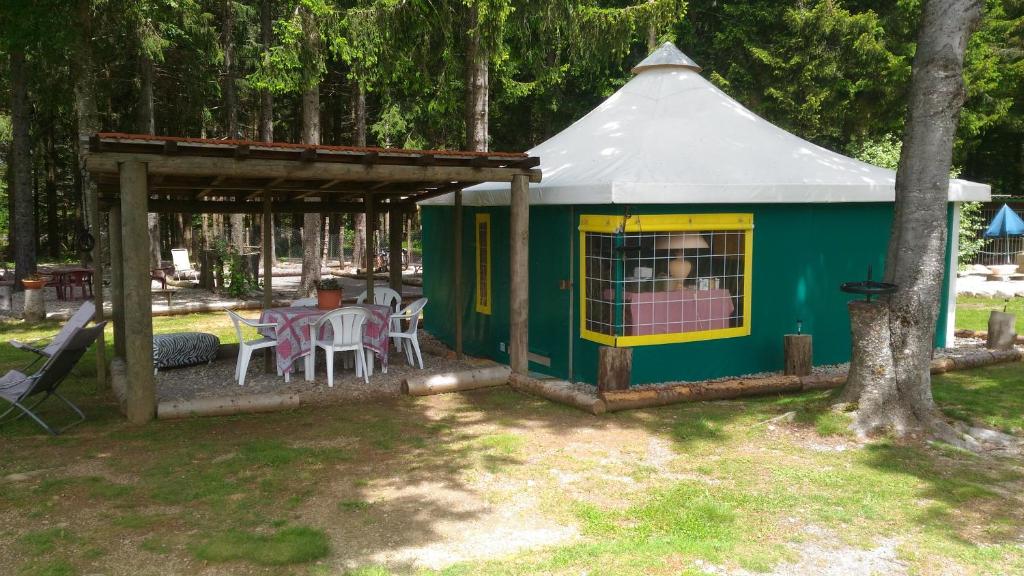
, * * * *
The upper image is courtesy of Le Sous Bois De Jade Chasserades France – Image Results.
Re: “Another camp-in-cabin place.” Like the place, Camping | Camping Au-Delà des Nuages | Rauret, described in From Monistair to “East of Langogne.”
Re: Land of Confusion. See Wikipedia, and also The Meaning Behind The Song: Land of Confusion by Genesis and Land of Confusion by Genesis – Songfacts: “A rare political song for Genesis, ‘Land of Confusion’ questions the wisdom of world leaders at a time when the US and Russia were enemies and there was a threat of nuclear war. Phil Collins called it, ‘A political song about the mess we have landed in.'” All of which seems an appropriate allegory, but consider also Meaning and origin of ‘you ain’t seen/heard nothing yet,’ about the colloquial phrase “used to indicate that however extreme or impressive something may seem, it will be overshadowed by what is to come.” All of which is one of those “rabbit trails” I’m known for. “I love writing these blog posts.They’re a way to keep learning and keep your mind active. Plus, ‘I love exploring those rabbit trails!‘”
The full name of a “how many miles,” Stevenson Trail GR®70: Bastide – Chasseradès – AllTrails.
Re: The ball-cap get-up. In recent hikes I’ve worn a neck gaiter, the kind that came out during COVID, pulled up over my Atlanta Braves baseball cap. It covered well but made me look a bit like a terrorist.
Re: “Sufficient unto the day.” Matthew 6:34, in the Contemporary English Version, “Don’t worry about tomorrow. It will take care of itself. You have enough to worry about today.” The original is from the King James Bible, the one God uses.
The lower image is courtesy of the website, Le Sous Bois De Jade, Chasseradès.
* * * *

